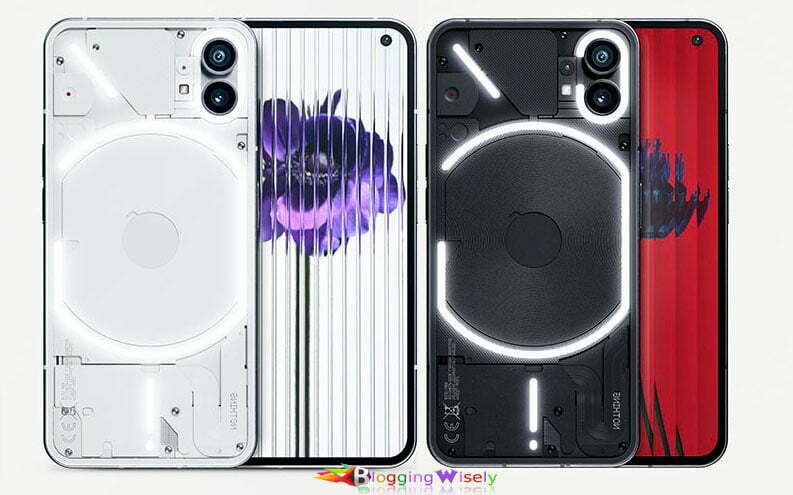
The appeal of the Nothing Phone 1 lies in its unique design and its strong story. The company learned from its first product, and the Phone 1 has surpassed all expectations. Unique features such as the transparent back and glyph lighting combine novelty and functionality in a way not possible with other phones.
You are likely to fall into one of two groups if you read this Nothing Phone 1 review: those who have never heard of Nothing and want to know what it is. Or those who have been following the story of the London-based startup and are eager to see if the hype train finally arrives.
Carl Pei, OnePlus CEO and co-founder, stated that the Phone 1 was being designed to bring joy back to the mobile market.
Phone 1 is now available. It was made with more than just me-too features. With a rear design unlike any other on the market, and features such as the Glyph Interface lighting, that add intrigue and whimsy to an otherwise capable set of hardware and features, the Phone 1 offers a well-rounded, versatile and comprehensive product.
Although the camera quality isn’t top-notch and the battery life is not great, the phone can be used as an everyday companion. It’s also far more interesting than most phones at its price.
Nothing Phone 1 Price and availability
Phone 1 was not revealed by anyone, but it will be available in the UK, Europe and Australia starting July 21.
The company confirmed that a US release would follow shortly, but didn’t give a specific date. It is speculated that modifications will be required for Phone 1 to fully leverage the 5G infrastructure of the region.
The Nothing Phone 1 comes in three RAM/storage options: 8GB / 128GB and 12GB / 256GB. Prices start at GBP£339 /EUR€ 469 / AU$749 and then go up to GBP£ 449 /EUR€ 499 / AU$799 respectively. These UK prices translate to approximately $475, $530 and $590 respectively in the US.
Nothing Phone 1 Design
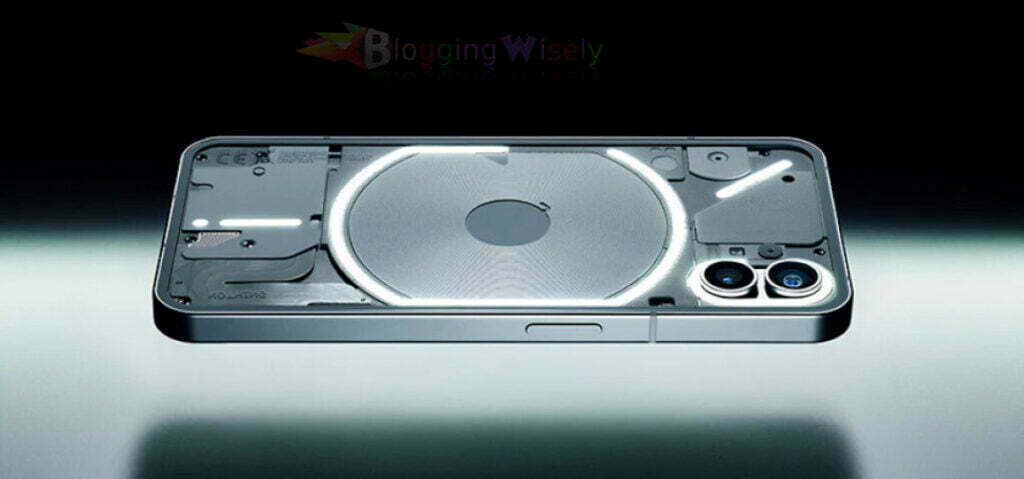
We were able to see the Phone 1’s design in Nothing before its launch but it was undoubtedly a more rewarding experience to get our hands on the phone.
The overall design is very similar to Apple’s iPhone 12. This is due to the Phone 1’s straight-sided aluminium frame, rounded corners and dual rear camera placement. Simply scale it up and run it through an X-ray machine.
Click here and get 19% off
“Why an X-ray machine?” You might be asking,
Although transparent-backed phones have been seen before, the components beneath are often only partially visible (as with the HTCU12+) and completely fake (as in the Mi 8 Explorer Edition). The exposed parts beneath are not designed to be functional or aesthetically pleasing to anyone.
The phone’s shifting specular highlights and shadows, which appear under and above the layers of different-textured components and screws beneath its back glass, make it an interesting piece of electronics.
Gorilla Glass 5
Phone 1 repels fingerprints even when it has a clear Gorilla Glass 5 back. If you do find smudges they can be easily removed.
Official Phone 1 cases are often purchased by buyers who appreciate their clarity straight out of the box (the case is transparent, too). However, prints will stick to it much more easily and require more work to remove than on the phone.
Colours
Nothing offers the Phone 1 in two colours at launch: a black and a white model. The former is more subtle and will be the most talked about when it’s placed on the bar table.
Weight
Despite being straight, the edges of its recycled aluminium frame are slightly rounded to make the Phone 1 more comfortable to hold. At 193.5g it is below the 200-gram mark, which is when a device’s weight begins to feel more noticeable.
Buttons
The power button on the right and the volume controls on left are large and easy to reach. They also respond quickly with satisfying clicks without requiring much force.
IP53 Certification
IP53 certification means that the Phone 1 can be used even in light rain and dust cannot get into the cavity behind the clear back glass. Just don’t drop it in your sink or throw it at the beach.
Screen Protector
The glass and metalwork showed no obvious wear during testing, except for the pre-fitted screen protector and charging cables, which were scuffed from the box.
It could be due to Nothing’s limited operational capacity at the start of the company – the company’s small size increases the likelihood of quality control slip-ups when compared to well-oiled giants like Samsung and Xiaomi. Or it could just be a faux pas that we only saw in the press sample.
Nothing Phone 1 Glyph Interface
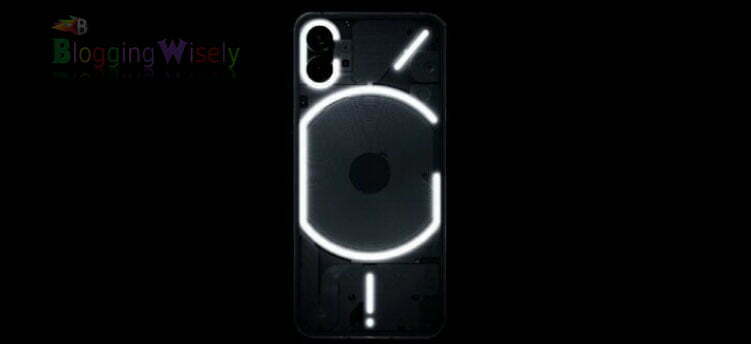
Unique LED notification lighting system. You can customize your ringtones or notifications with customizable patterns. Doubles as a fill-light when you shoot video
The transparent back of the phone is conversation-starting, but the statement feature of the Glyph Interface is what Nothing calls the Glyph Interface. It is a series of 900 LEDs placed across the back of the phone in a unique configuration that acts as a notification light.
The LEDs diffuse to create bars of light around elements such as the rear camera module or wireless charging coil. Each segmented glyph can also light up independently. This unique feature is something that Nothing has used in many creative ways.
You can adjust the Glyph Interface’s settings to change what the glyphs respond to and when they react. They are paired with one of Nothing’s 10 brand-name ringtones or notification tones. The various light and haptic patterns are perfectly synced to each other in terms of brightness, motion and audio.
However, the glyphs are more than just glanceable notifications. They can be used to indicate when the battery is full and for reverse wireless charging.
The Glyph Interface’s unique blend of functionality and novelty is undoubtedly a great way to have fun. We just wish that there were more personalization and customization options.
It’s nice to be able to link different glyph patterns or ringtone pairings with specific contacts in your address list. However, there is unquestionably scope to expand this functionality to app notifications and in-game actions. You could also create your glyph patterns to go along with your tunes and tones.
Buy it Now Click Here
After speaking with the team from Nothing, it is clear that Phone 1 will continue to evolve. This will no doubt be influenced by the first few owners of the phone once it goes on sale.
Display of Nothing phone 1
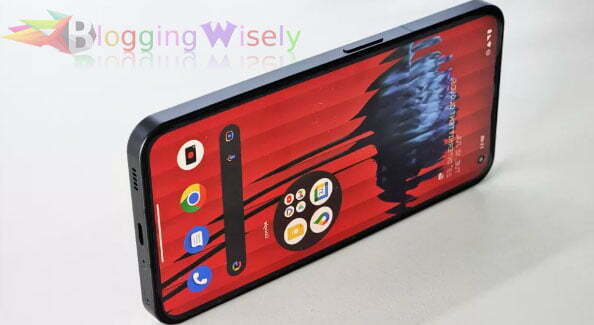
OLED Display & Refresh Rate
Phone 1 has been equipped with a 6.55-inch Full HD+ OLED display. It boasts a 120Hz refresh rate and HDR10+ compatibility.
Although the screen is surrounded by a small bezel, it makes some aesthetic points. It also has a uniform thickness throughout. This was possible because Nothing used a flexible OLED instead of a more expensive, rigid panel.
Punch-Hole & Fingerprint
The punch-hole front-facing camera of the phone is located in the top-left corner. An optical in-display fingerprint scanner sits low and near the bottom edge.
No Always on Display
OLED displays are a technical marvel, but there isn’t an OLED display that’s always on. (Nothing has been confirmed whether this will add this functionality at a later time). However, a faint ring delineating the fingerprint sensor’s location does linger on the screen when the rest of the display turns off. And despite the phone offering raise-to-wake functionality you don’t have to wake the phone before pressing the sensor to gain access. This makes it even more convenient.
Brightness
The panel’s output is Full HD+, which produces a sharp image that can be used for streaming video and social media. It has a brightness of 500nits, with a peak brightness of 1200nits. This brightness seems to work well in bright direct sunlight, where visibility begins to decrease.
OLED technology ensures vivid pictures. It can be paired with two colour profiles: Standard (the default) or Alive (the default). The Standard profile has a more natural-looking Standard. There is also a colour temperature slider that allows for fine-grain control.
Combination of 120HZ and 240HZ
The combination of a 120Hz high refresh rate and a 240Hz touch rate makes swiping around Phone 1’s interface, as well as more demanding experiences like gaming, feel snappy.
Dynamic refresh rates are also used to improve power efficiency. They can adjust the frequency (Hz), depending on the activity on the phone. The lower the Hz, the smoother the motion on-screen will appear but it will drain the battery faster.
Nothing Phone 1 audio
It’s no surprise that Nothing Phone 1 does not have a wired jack. Instead, it delivers audio over Bluetooth 5.2.
Nothing’s quick-pair technology allows you to connect select buds instantly, such as the company’s Nothing Ear 1 (although a complete list of supported products is yet to be shared).
Dual stereo speakers are also available on the phone. However, it is not an equal split. The majority of power comes from the down-firing speaker while the earpiece outputs highs and mids.
The speakers have good clarity across their range, with no distortion even when the volume is set to 100%. The phone’s clarity is good, which makes it easy to hear more nuanced vocals. Although the phone doesn’t have a lot of bass output, it does offer a high degree of stereo separation.
Software of Nothing Phone 1
Near-stock Android user experience. Nothing OS adds characterful, useful features. Guaranteed OS updates for three years, and security updates for four years. Resource optimization is essential for power and performance
The launcher was available for other brands, but it did not give users an experience of the bespoke Android-based user interface. However, the native experience is much more comprehensive.
The brand’s trademark dot matrix font can be found on the phone’s hardware, such as the glass back, and even the SIM tray. It also carries over to the user interface, called ‘Nothing OS’. This fronts menu and select widgets.
Nothing OS is as similar to Google’s Android OS. However, it has some minor adjustments that make it stand out from the rest. For example, folders can be expanded to take up 2×2 space on a home screen, which offers hybrid functionality. You can also swipe through quick-setting widgets, giving you more connectivity options. There’s also a pop-up view that allows for multitasking.
Although some inclusions, such as the smart home control shortcut, feel powerful, there are still signs of improvement in stability and features that are missing (such as a one-handed mode), that would enhance the user experience provided by Nothing OS running on Nothing Phone.
Nothing Phone 1 owners get three years of OS updates, and four years of security upgrades. This makes the phone more attractive in terms of value for money and long-term viability.
Performance and specifications

The Phone 1’s launch was controversial due to the revelation of Nothing’s choice in the chipset. Instead, the company chose to use a modified version of an older seventh-generation Qualcomm chipset – Snapdragon 778G+.
The base model comes with 8GB RAM. However, the top-tier model is available with 12GB. The ‘+’ signifies the addition of wireless (up to 15W) or reverse wireless (up to 5W) charging support.
Although the phone runs on less silicon than flagship smartphones, real-world usage shows that it is still a good investment.
Although the 778G+ will not win any awards for its benchmarking scores, it should be sufficient for most users to do everything from split-screen multitasking and semi-casual gaming. It can happily handle a few rounds of Call of Duty Mobile with Very High graphics settings and ‘Max frame rate settings enabled without any noticeable heat buildup.
The real test will be how responsive the Nothing Phone 1 is after prolonged usage, and whether the Phone 1 can maintain its current performance level after one year of software updates, security patches, and additions.
Battery Life of Phone 1
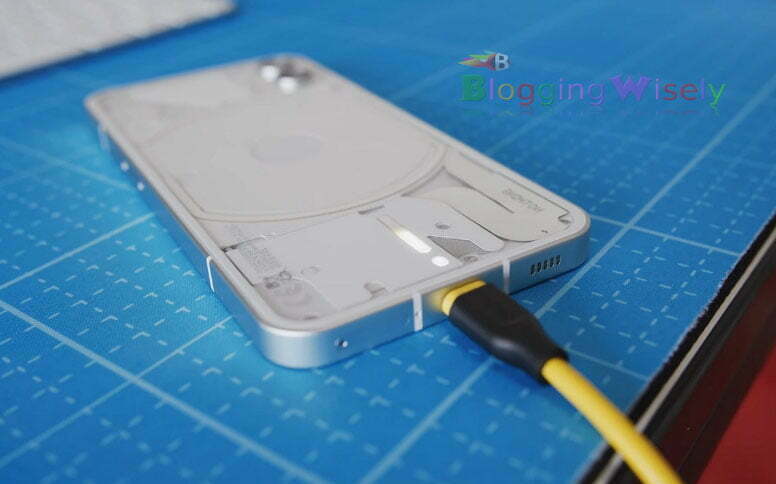
The 778G+ is a flawed device. It has a poor user experience and battery life. While there are some arguments for the phone’s ability to learn and optimize power management based on usage patterns, the baseline longevity is disappointing.
45000mAH Lithium
Phone 1’s glass display hides a 4,500mAh lithium battery. Nothing claims that it can provide up to 18 hours of usage per charge.
Screen Time
However, in practice, the Phone 1 provided approximately five hours of screen time per day, which is the minimum you should expect from a smartphone that’s worth its price.
Video Streaming
One charge was enough to handle emails synchronizing between a few addresses, 45 minutes of video streaming and about 20 minutes of messaging and web browsing.
You shouldn’t expect to be able to have a good time with Phone 1; you will need to charge the phone before you go to bed if you plan to binge-watch a Netflix series while on long trains. You can do less and still get a full day of use, but it is not possible.
Recharging
Recharging is easy. Phone 1’s battery can be charged to 50% in 30 mins if you have a compatible PD3.0/Quick Charge 4.0 adapter that meets the maximum fast-charging speed of 33W.
There is nothing that comes with a 45W power adapter (GBP35 / EUR35 / approximately AU$60), but the box doesn’t have one. You’ll only find a white USB-C to USB-C cable.
The unit, which was using a 27W PD adapter, reached over 65% after just 30 minutes. A full charge took less than an hour to complete.
Cameras of Nothing Phone 1

The front-facing camera clocks in at a modest 16MP. However, the rear cameras pack 50MP each.
Sony IMX766 sensor
The main Sony IMX766 sensor – which is supported by OIS (optical imaging stabilization) – is common among phone manufacturers (found on flagship Xiaomi12 and midrange OnePlus Nord 2), while a secondary 50MP Samsung JN1 ultrawide provides a degree of consistency when switching between the focal lengths.
The Phone 1 is fun to shoot with: it snaps quickly in daylight and artificial lighting, and the 50MP Sony sensor captures images that have a lot of detail and colours that dance beautifully with oversaturated colours. It is easy to take Instagram-worthy photos from anywhere, thanks to this feature.
Macro Mode
The phone’s dedicated Macro mode, which relies on the main sensor’s ultrawide sensor, produces better close-up shots when you snap things closer to it.
The ultrawide is a visual downgrade to the main camera. It has weaker colours, muddier details, and lower contrast. It still serves its purpose with a nice wide field of view at 114 degrees that allows you to be more creative.
Night Mode
Low light can make the sensor differences more obvious in terms of detail, grain, and dynamic range. However, Night Mode ultrawide shots with warmer colour temperatures sometimes have a positive charm, provided you don’t crop too much.
Glyph Interface
If you are curious, the Glyph Interface can be used as a fill light to replace the dedicated single LED flash on the phone. However, it has a shorter throw so it is best used with subjects closer to the camera.
Selfies
Capturing selfies is all about edge detection in portrait mode. This adds a level of polish that makes photos look better than they are.
Videos
Phone 1 can record video at 1080p/60fps, or 4K/30fps using the rear sensors. Although the vibrations made while walking and shooting are still visible in the final footage it would be nice to be capable of moving between the main and ultrawide sensor while recording.
YOU Can buy it if you want…..
A polished, all-rounder is what you want without breaking the bank.
Although the phone’s battery life isn’t the best, the Phone 1 can charge quickly and delivers a balanced user experience at a premium price.
You believe in Nothing’s story, and Phone 1’s intention.
A small business trying to be different in a highly competitive market is nothing. Phone 1 is the ideal example of this approach. It was designed to spark a conversation and delight users with its quirky eccentricities.
Your phone is silent, but you live with it.
The novelty of the Glyph interface is not the only thing that makes it useful. It allows you to monitor calls and activity on your phone without having to be distracted by notifications and constant dinging.
Should not buy it if…
You prefer a traditional flagship-class phone
The Phone 1 is not able to compete in the areas of raw performance and battery endurance, nor does it offer a superior camera. It has a unique design, is easy to use, and is affordable. These are not your top priorities? Look elsewhere.
A phone that has a long battery life is essential
The battery life of the Nothing Phone 1 is not great, despite a balanced experience. It charges up quickly, however.
A great camera phone is essential
Although the Nothing Phone 1 has a functional set of cameras, its quality and functionality are not up to par with entries like Google’s Pixel 6.
